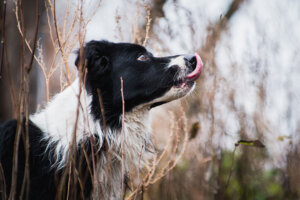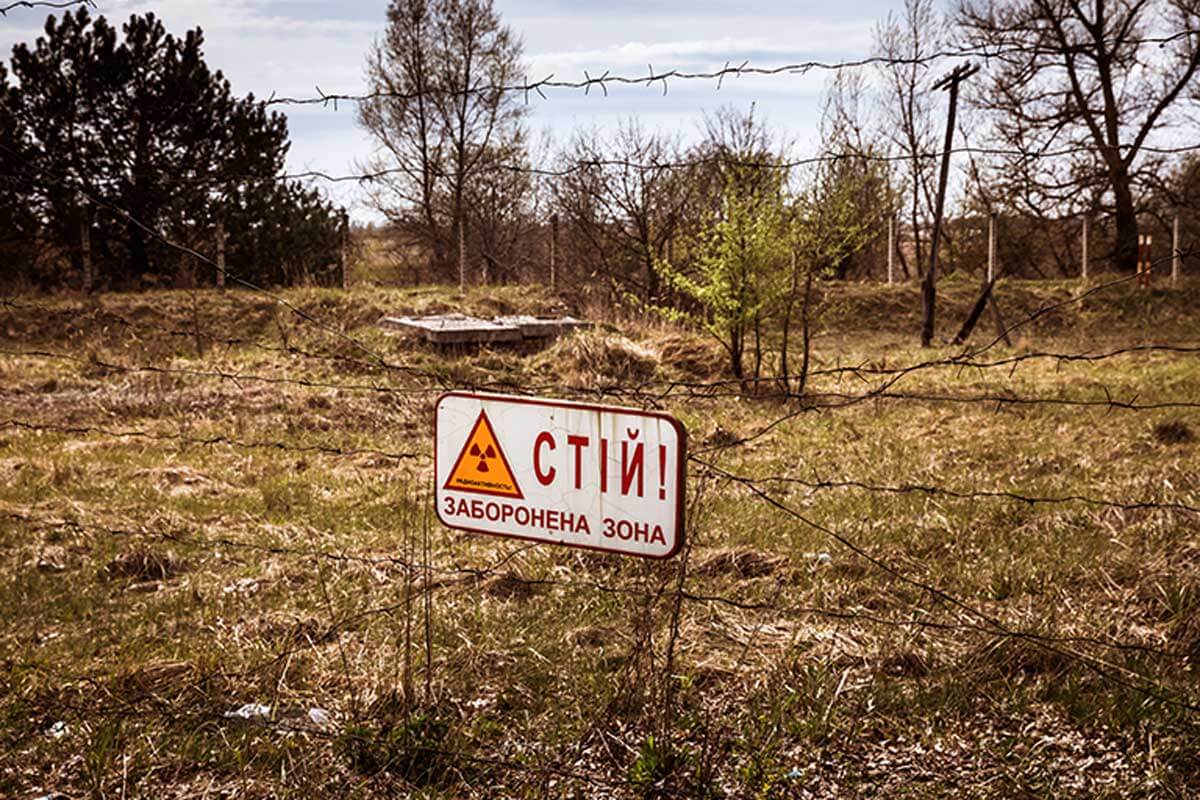The Dogs in Chernobyl Are Genetically Very Different, Studies Show

More than three decades have passed since the nuclear tragedy in Chernobyl and the dogs that live there today are revealing significant differences in their genetics. We know what happened that day, but we know very little about the long-term consequences. Find out about the dogs in Chernobyl in today’s article.
On April 26, 1986, the worst nuclear accident in the history of mankind occurred in the Ukrainian city of Pripyat and its nuclear power plant, Chernobyl. Nuclear reactor number 4 exploded in the middle of a simulated power outage test, causing a tragedy that has consequences to this day.
The next day the city was evacuated. The people who had contact in one way or another were seriously affected physically and psychologically. The genetic consequences, which could not be identified at first, have been discovered over the years.
Why are there still dogs living in Chernobyl?
Humans fled the city, fearing further consequences or explosions, and to avoid further exposure to radiation in the area. However, the flora and fauna took over the city, where you can see horses, wolves, bison, birds, frogs, elks and dogs. Today, this area is one of the largest nature reserves in Europe.
The dogs in Chernobyl, abandoned by their families after the catastrophe, formed a large population that inhabits the region surrounding the power plant. It’s still unknown whether the dogs currently absorb small amounts of radiation or whether they’re inheriting generational differences caused by the tragedy.
A study was carried out from 2017 to 2019 with 302 dogs living in the power plant itself and between 15 and 45 kilometers from the area. It’s important to note that radiation is still emanating in the area known as the “Chernobyl Exclusion Zone”. The zone covers an area of 2,600 square kilometers.

Are the dogs in Chernobyl really genetically different?
The research on dogs in Chernobyl showed that, indeed, the dogs in Chernobyl are genetically different from those that inhabit other areas not exposed to ionizing radiation. There are three distinct populations and this study showed that there’s genetic crossover and kinship ties between them.
Comparative studies showed that the dogs in Chernobyl are also genetically distinct from free-ranging dogs in Eastern Europe, Asia, and the Middle East.
“I think the most remarkable thing about the study is that we identified populations of dogs living inside and in the shadow of the reactor, and we can tell which those dogs are just by looking at their DNA profile. To think of families living in places near spent fuel rods is incredible and speaks to the resilience of dogs as a species,” study author Elaine Ostrander, a geneticist at NIH’s National Human Genome Research Institute, told IFLScience.
More than three decades have passed since the nuclear tragedy in Chernobyl and the dogs that live there today are revealing significant differences in their genetics. We know what happened that day, but we know very little about the long-term consequences. Find out about the dogs in Chernobyl in today’s article.
On April 26, 1986, the worst nuclear accident in the history of mankind occurred in the Ukrainian city of Pripyat and its nuclear power plant, Chernobyl. Nuclear reactor number 4 exploded in the middle of a simulated power outage test, causing a tragedy that has consequences to this day.
The next day the city was evacuated. The people who had contact in one way or another were seriously affected physically and psychologically. The genetic consequences, which could not be identified at first, have been discovered over the years.
Why are there still dogs living in Chernobyl?
Humans fled the city, fearing further consequences or explosions, and to avoid further exposure to radiation in the area. However, the flora and fauna took over the city, where you can see horses, wolves, bison, birds, frogs, elks and dogs. Today, this area is one of the largest nature reserves in Europe.
The dogs in Chernobyl, abandoned by their families after the catastrophe, formed a large population that inhabits the region surrounding the power plant. It’s still unknown whether the dogs currently absorb small amounts of radiation or whether they’re inheriting generational differences caused by the tragedy.
A study was carried out from 2017 to 2019 with 302 dogs living in the power plant itself and between 15 and 45 kilometers from the area. It’s important to note that radiation is still emanating in the area known as the “Chernobyl Exclusion Zone”. The zone covers an area of 2,600 square kilometers.

Are the dogs in Chernobyl really genetically different?
The research on dogs in Chernobyl showed that, indeed, the dogs in Chernobyl are genetically different from those that inhabit other areas not exposed to ionizing radiation. There are three distinct populations and this study showed that there’s genetic crossover and kinship ties between them.
Comparative studies showed that the dogs in Chernobyl are also genetically distinct from free-ranging dogs in Eastern Europe, Asia, and the Middle East.
“I think the most remarkable thing about the study is that we identified populations of dogs living inside and in the shadow of the reactor, and we can tell which those dogs are just by looking at their DNA profile. To think of families living in places near spent fuel rods is incredible and speaks to the resilience of dogs as a species,” study author Elaine Ostrander, a geneticist at NIH’s National Human Genome Research Institute, told IFLScience.
All cited sources were thoroughly reviewed by our team to ensure their quality, reliability, currency, and validity. The bibliography of this article was considered reliable and of academic or scientific accuracy.
- Gabriella J. Spatola and Reuben M. Buckley and Megan Dillon and Emily V. Dutrow and Jennifer A. Betz and Małgorzata Pilot and Heidi G. Parker and Wiesław Bogdanowicz and Rachel Thomas and Ihor Chyzhevskyi and Gennadi Milinevsky and Norman Kleiman and Matthew Breen and Elaine A. Ostrander and Timothy A. Mousseau. The dogs of Chernobyl: Demographic insights into populations inhabiting the nuclear exclusion zone. Science Advances. Vol. 9, Núm. 9. 2023. doi 10.112
This text is provided for informational purposes only and does not replace consultation with a professional. If in doubt, consult your specialist.








